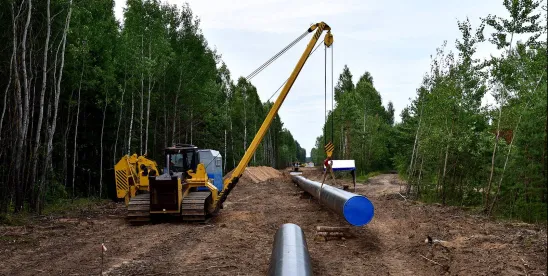The Supreme Court of the United States’ recent ruling in Loper Bright Enterprises v. Raimondo[1]dealt a significant blow to the power of federal agencies by ending the 40-year-old precedent commonly known as “Chevron deference.” Loper has now removed the judicial mandate that courts apply “Chevron deference” and defer to agencies on the interpretation of ambiguous language in laws pertaining to their authority. While it is unclear what impact this ruling will have in environmental enforcement cases as well as environmental regulations, federal judges will now have the power to decide what a law means for themselves, expanding the federal bench’s role in enforcement actions and policymaking.
The Chevron Deference Doctrine
The “Chevron deference” doctrine refers to the Supreme Court’s ruling in Chevron v. Natural Resources Defense Council,[2] which required judges to defer to federal agencies when interpreting ambiguous parts of statutes that those agencies administer. If Congress did not directly address a debated issue, a court was required to uphold the agency’s interpretation of the statute as long as it was reasonable.
The Chevron doctrine involves a two-step test.[3] In the first step, courts determine if Congress has spoken to the “precise question at issue.”[4] If the statute is ambiguous, courts move to step two.[5] However, “if the intent of Congress is clear, that is the end of the matter; for the court, as well as the agency, must give effect to the unambiguously expressed intent of Congress.”[6] In the second step, courts defer to the agency as long as their interpretation of the statute is reasonable.[7] Reasonableness is not a high bar. Typically, if a court finds the statute to be ambiguous, the agency’s interpretation will receive deferential preference. At the time of the holding, the Chevron doctrine marked a jurisprudential shift in the interpretive power of the courts, which have historically determined “what the law is,”[8] to agencies in the executive branch.[9]
Overruling Chevron
In Loper, the owners of a New England fishing company brought an action against the National Marine Fisheries Service (“NMFS”).[10] The Magnuson-Stevens Act sets catch limits to prevent overfishing and requires fishing boats of certain sizes to have a government-approved inspector onboard to monitor compliance.[11] Fishing companies incur the cost of these inspectors—amounting to over $700 a day—but Loper Bright Enterprises argued NMFS had no authority to force companies to do so.[12] The district court disagreed, reasoning that Congress left that question open for the agency to decide.[13] Applying Chevron, the district court deferred to NMFS’s interpretation that the boat owner should pay. A federal appeals court affirmed this decision.[14] The plaintiffs then appealed to the Supreme Court, which in May 2023 announced that it would hear the case.[15] On June 28, 2024, by a vote of 6-3, the justices overruled their landmark 1984 decision in Chevron, holding that the Chevron deference is inconsistent with the Administrative Procedure Act, a federal law that sets out the procedures that federal agencies must follow as well as instructions for courts to review actions by those agencies.[16] In drafting the majority opinion, Chief Justice John Roberts also rejected any suggestion that agencies, rather than courts, are better suited to determine what ambiguities in a federal law might mean, calling the doctrine “fundamentally misguided.”[17]
What’s Next?
The Chevron doctrine has faced considerable criticism in recent years by opponents of the doctrine claiming that it allowed agencies to impose onerous restrictions and rules , which were not authorized by Congress, and resulted in a greater burden of proof on the regulated community in defending against enforcement actions. While the ruling will no doubt lead to increased judicial interpretations if there are ambiguous regulations, deference will continue to play a role in judicial analyses for at least two reasons. First, the Supreme Court in Loper indicated that earlier cases that relied on Chevron would not be overturned. Specifically, “[m]ere reliance on Chevron cannot constitute a special justification for overruling” a decision upholding agency action “because to say a precedent relied on Chevron is, at best, just an argument that the precedent was wrongly decided,” which is not enough, standing alone, to overrule the case.[18] Therefore, any environmental rules previously held to be reasonable under the Chevron deference will not be automatically appealed. Second, empirical studies suggest that, independent of Chevron, courts still show a preference to defer to agency action when scientific environmental expertise is required.[19] Thus, we can still expect courts to afford some degree of deference to agencies, particularly where the issues require highly complex and technical expertise.
Conclusion
Looking into the future, those in the regulated community seeking to challenge an agency rule or an enforcement action may be far more willing to do so in court. Overturning Chevron will give judges greater latitude when analyzing agency decisions and enforcement actions interpreting environmental statutes. In so doing, the ruling opens the door to challenges to many rules related to environmental guidance documents and policies issued by the Environmental Protection Agency (“EPA”) and state agencies involving air and water quality, climate change, and other environmental and public health policies, and EPA will likely have a more difficult time defending enforcement actions and rulemakings. The ruling also places a greater onus on Congress to be more specific when drafting environmental legislation.
[1] Loper Bright Enters. v. Raimondo, No. 22-451 & 22-1219, 2024 U.S. LEXIS 2882 (June 28, 2024).
[2] Chevron, U.S.A., Inc. v. Natural Resources Defense Council, Inc., 467 U.S. 837 (1984).
[3] Chevron, 467 U.S. at 843.
[4] Id.
[5] Id.
[6] Id. at 842-43.
[7] Id. at 844.
[8] Marbury v. Madison, 5 U.S. 137, 177 (1803).
[9] Cass R. Sunstien, Law and Administration After Chevron, 90 Colum. L. Rev. 2071, 2085–88 (1990); Linda Jellum, Chevron’s Demise: A Survey of Chevron from Infancy to Senescence, 59 Admin. L. Rev. 725, 728–29 (2007).
[10] Loper Bright Enters. v. Raimondo, No. 22-451 & 22-1219, 2024 U.S. LEXIS 2882 at *18 (June 28, 2024).
[11] See Magnuson-Stevens Fishery Conservation and Management Act, 16 U.S.C. §§ 1801-1804 et seq.
[12] Loper Bright Enters., Inc. v. Raimondo, 45 F.4th 359, 373 (D.C. Cir. 2022).
[13] Loper Bright Enters., Inc. v. Raimondo, 544 F. Supp. 3d 82, 127 (D.D.C. 2021).
[14] Loper Bright Enters., Inc. v. Raimondo, 45 F.4th 359 (D.C. Cir. 2022).
[15] See Jane Thomas, “Chevron Deference in its Last Days?,” Blank Rome’s Energy, Chemical & Environmental Trends Watch (Sept. 18, 2023), energytrendswatch.com/2023/09/18/chevron-deference-in-its-last-days/#more-1211.
[16] Loper Bright Enters. v. Raimondo, 2024 U.S. LEXIS 2882 at *38.
[17] Id. at *14.
[18] Loper Bright Enters. v. Raimondo, 2024 U.S. LEXIS 2882 at *61.
[19] Jason J. Czarnezki, An Empirical Investigation of Judicial Decisionmaking, Statutory Interpretation, and the Chevron Doctrine in Environmental Law, 79 U. Colo. L. Rev. 767, 771 (2008).




 />i
/>i
